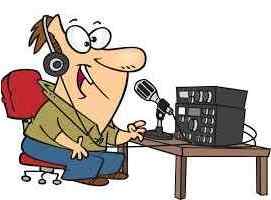
Radio amateurs are a diverse group of men and women. Each has experience that is unique, built up from a lifetime of living or working in many places in our community. No two of us have had the same journey on our planet. Yet radio amateurs do share one thing - a fascination with communicating over wireless. If you share that sense of wonder then amateur radio might be something you enjoy.
At our meetings we indulge that passion for radio operating and communicating. In our radio 'shack' at home, we talk with other hams across the globe - or just across town.
For some of us, the pleasure is in listening to and responding to others in similar or widely different environments.
For others, there is satisfaction is mastering a little of the wide field of radio technologies. Some are expert in one or two areas and help the rest of us improve our knowledge.

CQ DX: long distance radio contact
CW: Morse Code (a.k.a. continuous wave)
AREC: radio communications in disaster conditions
Mobile: radio chat while walking, cycling, motoring, boating
Contests: compete for most or farthest contacts
Digital: link radio through the Internet
VHF Net: weekly meets using local repeaters
QSL: ham friends overseas
Satellite: bounce signals off satellites to reach Australia/Asia/USA
QRP: low power radio communication
Junk Sales: trade for rigs and components
Amateur radio in New Zealand is administered by RSM (Radio Spectrum Management). Amateur radio operators require a Certificate of Competency and a call sign identification. Call signs in NZ begin with ZL followed by a single digit (1-9) and a two or three character suffix. New amateurs choose any call sign that is not listed already in the database. For example, a new amateur, Max Adam Price, might choose call sign ZL1MAP.
The New Zealand Association of Radio Transmitters (Inc.), arranges exam questions for amateurs. There are 600 multi-choice questions in the question bank. These group into basic headings such as general operating procedure, electrical theory, transmitting, receiving, electronic components and interference. Each exam candidate answers 60 questions in an exam. Forty correct answers are a pass. Link to NZART exam page.
We have two examiners in our club: ZL1TO, Tom McDonald & ZL1PX, Peter Henderson. Our parent organsation, New Zealand Amateur Radio Transmitters issues call signs and certificates. New amateurs are limited to transmissions below 5 mHz and above 30 mHz, but after three months and 50 logged contacts, they can access all amateur frequencies.
Created entirely within CSS - with grateful thanks to W3!